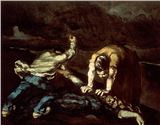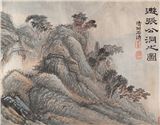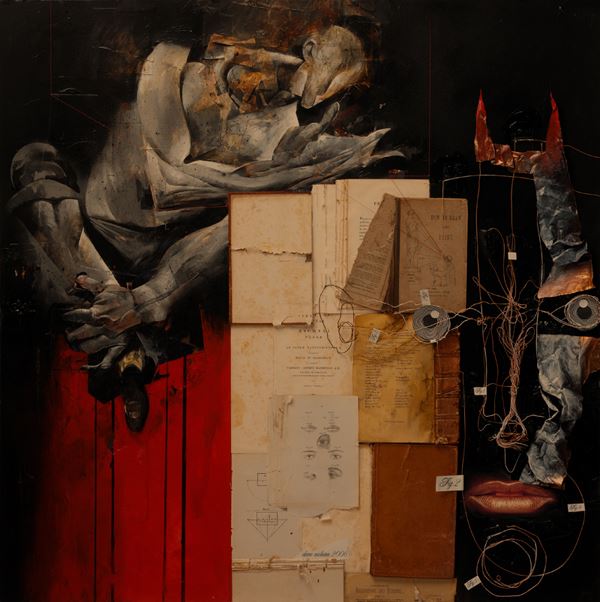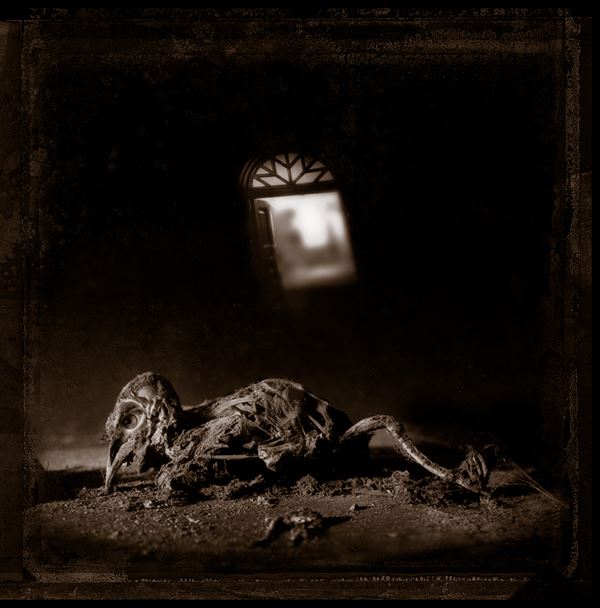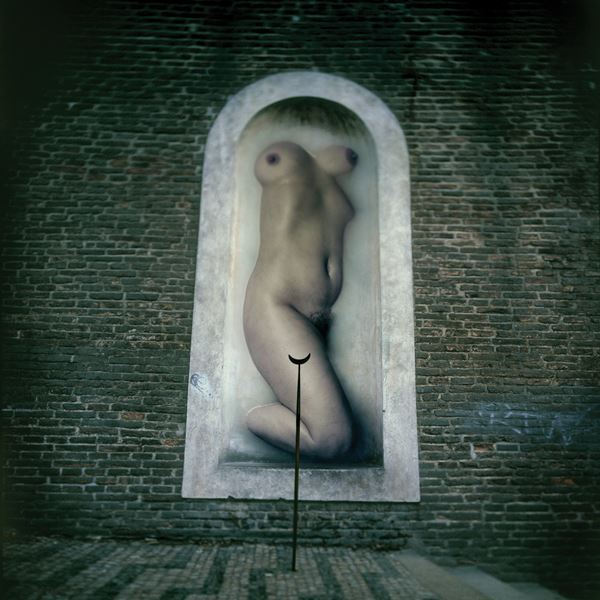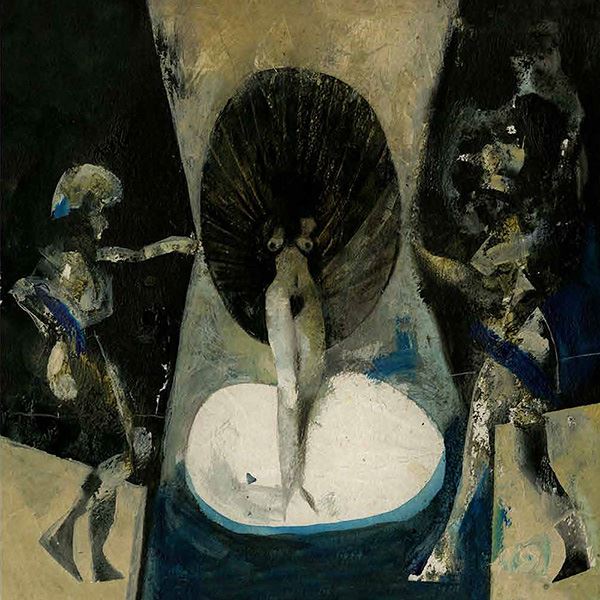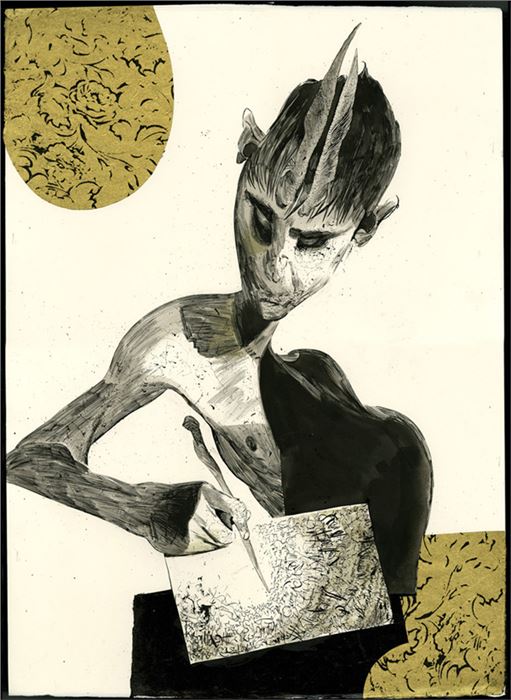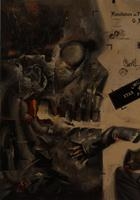The Strangest of Dreams: The Art of Dave McKean
Dave McKean’s prolific and diverse artistic output is based on his fearless approach to progress – although he does not see the future of creativity in AI
Benjamin Blake Evemy / MutualArt
Oct 24, 2023

Eldritch images of distorted beings, rich in texture and exuding an almost-tangible atmosphere, Dave McKean’s pieces are some of the most exquisitely imaginative to come out of Britain in recent decades. Executed in a plethora of mediums, and to be found in myriad places, whether it be tucked away in the pages of comic books, upon the silver screen, or the gallery wall, to gaze upon Dave McKean’s art is to feel like one is in the throes of the strangest of dreams.
Dave McKean, Blood of a Poet. Courtesy of the artist
Dave McKean was born in 1963 in the English village of Taplow, Berkshire. As far as memory can stretch back, he has been drawing. Around the age of eleven or twelve, he discovered the world of comics, and upon realizing that people actually made a living writing and drawing them, saw the path open up before him. In 1982, he began his studies at the Berkshire College of Art and Design, leaving in 1986 to start working as an illustrator. His time at art school was to have a huge formative influence on McKean. Upon enrolment, he was decidedly focused on the world of comics and science-fiction. His obstinacy eventually weakened with the constant nagging from his teachers to look out into the world, and he began to soak everything up. Movements from the early 20th century – when the art world saw a shift from pieces created as elite decoration to personal exploration, such as expressionism and modernism – had a profound impact on the young artist.
In 1986, when visiting New York City to show his work to editors, Dave McKean met writer and fellow Englishman Neil Gaiman for the first time. The pair would become longtime collaborators, seeing the release of the short graphic novel Violent Cases published the following year, and going on to work together on a plethora of highly acclaimed projects.
Dave McKean, Bird. Courtesy of the artist
In 1989, McKean started illustrating the covers of DC Comic’s Sandman, penned by Neil Gaiman. Five years later, in 1994, he started using Photoshop in order to create for the pioneering series. Around that period, McKean had been illustrating a large amount of album covers, and when realizing that a lot of his peers were starting to make the shift to creating digitally, he bought a Mac and the now-ubiquitous program, vigorously studying its manual cover to cover. It was a watershed moment for the artist.
“It was like it had been written just for me,” he recalls. “All the things I wanted to do were addressed, given names that were clear and obvious to me, and I knew it would be a huge help for me to realize the images in my head. I loved the playfulness of using Photoshop, I could try things and save off versions, and not worry about spoiling the image by overworking it. I think before PS I got about 20% of what I wanted onto the page, after PS I got closer to 70%.”
Dave McKean, Ace Staffs. Courtesy of the artist
McKean’s output may be nothing short of prolific, but after a lifetime of creativity, the artistic process still does not necessarily come easily. He explains, “I’ve tried to pay attention to my state of mind when I start a new project, but it’s a painful repeating pattern of struggling to find anything that works in the first few days, throwing most of what I do into the bin, self-doubt, anxiety, time passing, deadlines approaching, stress. But then something clicks, it always does, and I get into it, I stop worrying, I start enjoying it and see the possibilities, and then I’m in the flow, or the zone, or whatever it is, and just floating somewhere between paying attention but not overthinking it. Every time I go through this little routine, and even though I’m fully aware of it now, I can’t seem to bypass it.”
Dave McKean, 67. Courtesy of the artist
In recent years, the art world has seen the rise of images created by artificial intelligence, and with it, a plethora of questions have inevitably arisen. Understanding that he could either “retire or respond,” McKean set about creating what would become a 96-page book of short graphic stories “exploring and conversing” with the phenomenon that seems to have manifested straight from the pages of a science-fiction novel. The project was created in merely twelve days, a little over half the time it took to print and bind the subsequent book. When asked what his thoughts were on AI-created art, McKean’s response is one that any interested in, or involved with the phenomenon, should certainly take note of:
“After an intensive time working with it and getting to know its strengths and weaknesses, and researching how the algorithms work, I’ve decided AI should have no business in our creative lives, and will only have a negative effect on human culture. Science, medicine, sure, AI’s pattern recognition will bring great opportunities and advances, but creativity should remain, I believe, the domain of humans in their attempt to understand each other, and be empathic. AI will only confuse, or destroy, that. And it’s not ‘art’. It’s stuff, it doesn’t meet my definition of art. Also, we all as individuals have to understand that we either live an ethical life, or we knowingly don’t. AI uses other people’s work to mix into its imagery, you either respect that that is copyright infringement, or you choose to turn a blind eye.”
Dave McKean, Callisto. Courtesy of the artist
Not surprisingly, McKean is currently at work on a number of different projects, including a collection of paintings and drawings inspired by silent cinema, further instalments in his travel sketchbook series, a short film on a project about the iconic actor Christopher Lee, and illustrated books by Stephen King and F. Scott Fitzgerald, among others. A 600-page comprehensive collection of McKean’s art, entitled Thalamus, is also slated for release on November 28, by Dark Horse Books. Praised by master Mexican filmmaker Guillermo del Toro, the collection includes never-before-seen pieces of McKean’s richly imaginative work.
Dave McKean has contributed much in many mediums, and his unique approach to creating comic book art forever changed the way illustrated books were approached. The art world is lucky to possess one with such an all-encompassing vision and singular style, and it is certain that McKean’s work will continue to be cherished for many years to come.
For more on auctions, exhibitions, and current trends, visit our Magazine Page


